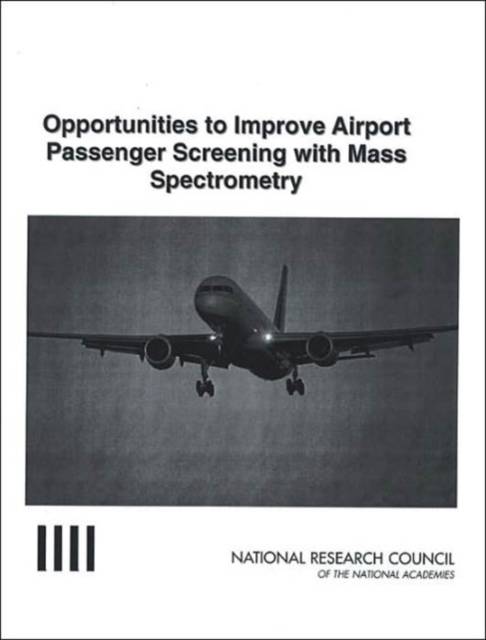
- Afhalen na 1 uur in een winkel met voorraad
- Gratis thuislevering in België vanaf € 30
- Ruim aanbod met 7 miljoen producten
- Afhalen na 1 uur in een winkel met voorraad
- Gratis thuislevering in België vanaf € 30
- Ruim aanbod met 7 miljoen producten
Zoeken
Opportunities to Improve Airport Passenger Screening with Mass Spectrometry
National Research Council, Division on Engineering and Physical Sciences, National Materials Advisory Board, Committee on Assessment of Security Technologies for Transportat
Paperback | Engels
€ 42,95
+ 85 punten
Omschrijving
Protection of the traveling public from terrorist threats involving explosives is a major goal of the Transportation Security Administration (TSA). For 20 years, the TSA (and the Federal Aviation Administration before it) have been investing in technologies to meet that goal. To support that activity, the TSA has asked the NRC to assess a variety of technological opportunities for offering such protection. The NRC is approaching this assignment by issuing a series of reports on chosen technology applications. This is the first of that series and presents an assessment of mass spectrometry for enhanced trace detection (ETD) of chemicals contained in explosives. The report describes limitations of trace detection in general and the current technologies in particular. It then presents a discussion of the potential for mass spectrometry to improve EDT including challenges faced by such a system, recommendations for starting a program to take advantage of mass spectrometry, and recommendations for a phased implementation plan.
Specificaties
Betrokkenen
- Auteur(s):
- Uitgeverij:
Inhoud
- Aantal bladzijden:
- 56
- Taal:
- Engels
Eigenschappen
- Productcode (EAN):
- 9780309092401
- Verschijningsdatum:
- 12/06/2004
- Uitvoering:
- Paperback
- Formaat:
- Trade paperback (VS)
- Afmetingen:
- 216 mm x 279 mm

Alleen bij Standaard Boekhandel
+ 85 punten op je klantenkaart van Standaard Boekhandel
Beoordelingen
We publiceren alleen reviews die voldoen aan de voorwaarden voor reviews. Bekijk onze voorwaarden voor reviews.








